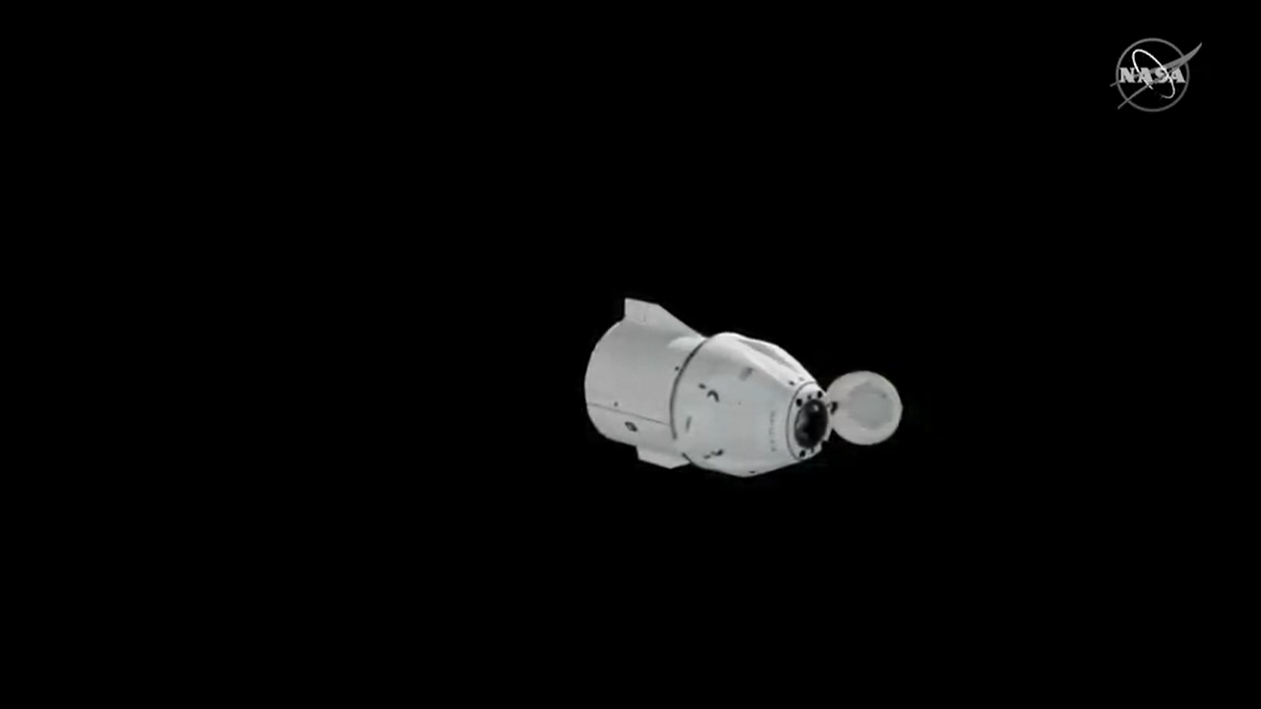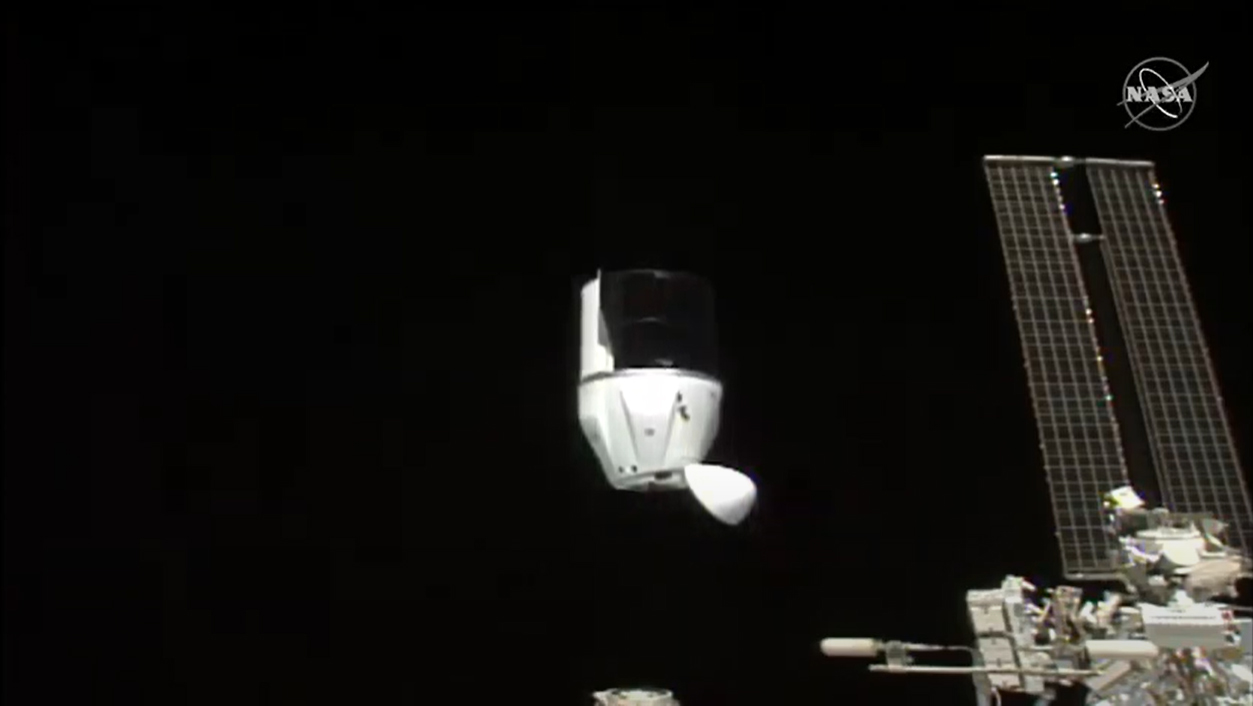SpaceX Cargo Dragon supply ship makes 1st autonomous undocking from space station
A SpaceX Dragon cargo ship made its first-ever autonomous undocking from the International Space Station Tuesday (Jan. 12), setting the stage for a return to Earth this week.
The historic event — the first undocking by an uncrewed U.S. supply ship, saw SpaceX's CRS-21 Cargo Dragon back away from the Harmony module's space port at 9:05 a.m. EST (1405 GMT). Live views on NASA Television showed the spacecraft maneuvering in orbit as it left the station as both spacecraft sailed high above the southern Atlantic Ocean.
"Godspeed, Cargo Dragon and to the recovery team," NASA astronaut Victor Glover said from aboard the space station, where he monitored the spacecraft's departure.
Video: See SpaceX's 1st automated uncrewed docking at space station
Related: SpaceX launches upgraded Cargo Dragon to space station for NASA



It will take about 36 hours for the SpaceX Dragon to return to Earth. The spacecraft is expected to splash down in the Gulf of Mexico on Wednesday (Jan. 13), though NASA and SpaceX will not broadcast the splashdown live. The spacecraft is carrying 5,200 lbs. (2,500 kilograms) of scientific experiments and other gear back to Earth.
"Dragon will conduct a deorbit burn at 7:37 p.m. EST [0200 GMT Thursday, Jan. 14] to begin its re-entry sequence into Earth's atmosphere. Dragon is expected to splash down west of Tampa off the Florida coast about 8:27 p.m. EST [0327 GMT]," NASA said in a statement.
SpaceX's upgraded Cargo Dragon capsule can carry 20% more cargo and experiments than previous versions of the craft, allowing for increased science from each mission. Previously, all Dragon spacecraft were berthed to the space station using the outpost's robotic Canadarm2, and then they would splash down in the Pacific — far away from the science processing center at NASA's Kennedy Space Center in Florida.
Breaking space news, the latest updates on rocket launches, skywatching events and more!
NASA said the new turnaround time for experiment analysis would start as soon as four hours after splashdown. NASA and SpaceX originally planned for the Cargo Dragon to splash down in the Atlantic Ocean, off the eastern coast of Florida, but bad weather at its drop zone prompted a one-day delay.
The Dragon spacecraft launched Dec. 6 from Launch Complex 39A, arriving at the space station around 24 hours later. The mission also was the first time that two Dragons were docked to the space station at the same time, as Expedition 64's Crew Dragon remains docked to the orbiting complex to return them to Earth later this year. That Dragon spacecraft launched in November with four astronauts on NASA's Crew-1 mission.
Some of the returning experiments include investigations into cardiovascular cells, biofilms that could corrode stainless steel spacecraft structures, techniques to assist with deep-space emergency navigation and several live mice who are assisting with long-term studies into why astronaut eyesight changes in space.
Follow Elizabeth Howell on Twitter @howellspace. Follow us on Twitter @Spacedotcom and on Facebook.

Elizabeth Howell (she/her), Ph.D., was a staff writer in the spaceflight channel between 2022 and 2024 specializing in Canadian space news. She was contributing writer for Space.com for 10 years from 2012 to 2024. Elizabeth's reporting includes multiple exclusives with the White House, leading world coverage about a lost-and-found space tomato on the International Space Station, witnessing five human spaceflight launches on two continents, flying parabolic, working inside a spacesuit, and participating in a simulated Mars mission. Her latest book, "Why Am I Taller?" (ECW Press, 2022) is co-written with astronaut Dave Williams.
